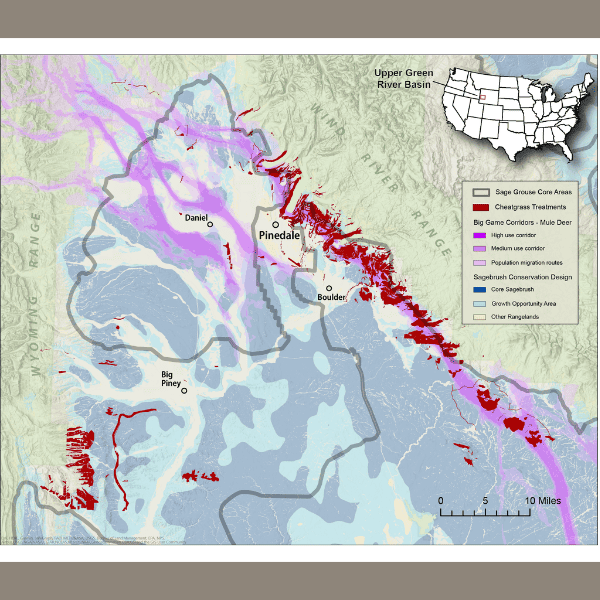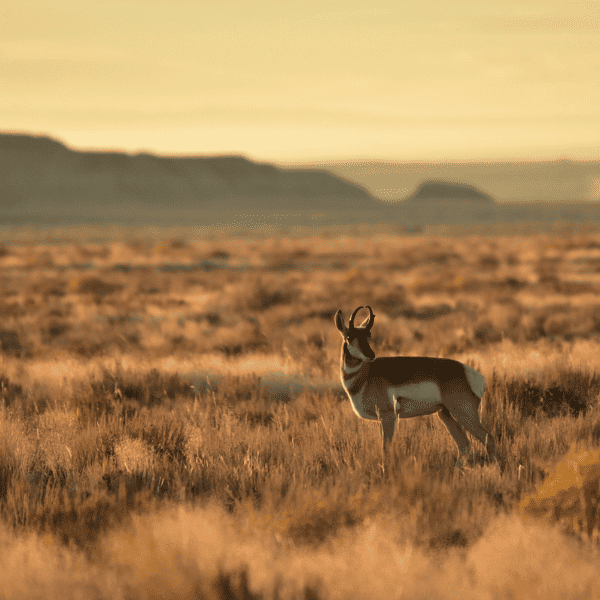View Full Size
NRCS range specialist Kami Kilwine assesses vegetation with Montana rancher Patrick Lohof
We are thrilled to share this story on voluntary range improvements by Montana ranchers — “To lek with grazing” by Martha Mintz appeared in the Spring edition of John Deere’s The Furrow magazines. (Copyright (c) 2015 Deere & Company. All worldwide rights reserved.)
Montana ranchers Patrick and Christy Lohof saw a 100-pound gain in their yearling red Angus heifers after working with the Sage Grouse Initiative on range and water improvement projects. Not only will their livestock continue to benefit from better access to water and grass, sage grouse will, too. Providing good habitat and uninterrupted sagebrush cover, including large intact landscapes like the Lohofs’ ranch, will help sage grouse recover their former numbers.
Thanks to Farm Bill funds provided by SGI, the Lohofs were able to implement a rest-rotation grazing system. Patrick Lohof says: “We know these changes will improve our pastures … now, it’s financially possible for us to be better land managers.” According to this article in The Furrow, good rest-rotation grazing leaves about 50 percent of vegetation in place, protecting soil from erosion, promoting plant diversity and better nutrients, and providing cover for sage grouse.
The Lohofs, who ranch near Otter, Montana, have worked with SGI and NRCS specialists to replace aging, high-maintenance, 4-strand barbed wire fences with wildlife-friendly electric fencing to better distribute livestock between pastures. Plus, they’ve installed 13 miles of water line and 23 water tanks to help their red Angus heifers access water more easily and rest rangelands from grazing. Next up, they’re working with rangeland ecologists to come up with a long-term grazing rotation plan.
Read the full story as a PDF here: “To lek with grazing.”

Click here to read the full article! Article appears courtesy John Deere’s The Furrow magazines. Copyright (c) 2015 Deere & Company. All worldwide rights reserved.









